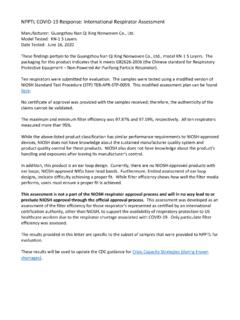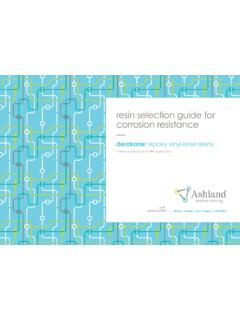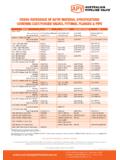Transcription of Working on a WARMER - International Labour Organization
1 Working on aWARMER planetThe impact of heat stress on Labour productivity and decent workInternational Labour Office GenevaWorking on a WARMER planetThe impact of heat stress on Labour productivity and decent workProduced by the Publications Production Unit (PRODOC) of the and typographic design, manuscript preparation, copy editing, layout and composition, proofreading, printing, electronic publishing and endeavours to use paper sourced from forests managed in an environmentally sustainable and socially responsible : DTP-WEI-CORREDIT-REPThe designations employed in ILO publications, which are in conformity with United Nations practice, and the presenta-tion of material therein do not imply the expression of any opinion whatsoever on the part of the International Labour Office concerning the legal status of any country, area or territory or of its authorities, or concerning the delimitation of its responsibility for opinions expressed in signed articles, studies and other contributions rests solely with their authors, and publication does not constitute an endorsement by the International Labour Office of the opinions expressed in them.
2 Reference to names of firms and commercial products and processes does not imply their endorsement by the International Labour Office, and any failure to mention a particular firm, commercial product or process is not a sign of on ILO publications and digital products can be found at: International Labour Organization 2019 First published 2019 Publications of the International Labour Office enjoy copyright under Protocol 2 of the Universal Copyright Convention. Nevertheless, short excerpts from them may be reproduced without authorization, on condition that the source is indi-cated. For rights of reproduction or translation, application should be made to ILO Publications (Rights and Licensing), International Labour Office, CH-1211 Geneva 22, Switzerland, or by email: The International Labour Office welcomes such , institutions and other users registered with a reproduction rights Organization may make copies in accordance with the licences issued to them for this purpose.
3 Visit to find the reproduction rights Organization in your on a WARMER planet: The impact of heat stress on Labour productivity and decent workInternational Labour Office Geneva, ILO, 2019 ISBN 978-92-2-132967-1 (print) ISBN 978-92-2-132968-8 (web pdf)decent work / Labour productivity / climate change / temperature / stress / environment deterioration / employment / Labour market Cataloguing in Publication Data 3 It s too hot to work today! For many of us, an exclamation like the above is a way of giving vent to our annoyance at the occasional inconveniences of the hottest months of the year. For millions of workers across the world, it is a sign of distress.
4 For many economies, it is a threat to their phenomenon of heat stress refers to heat received in excess of that which the body can tolerate without physiological impairment. Heat stress affects, above all, outdoor workers such as those engaged in agriculture and on construction sites. It is a serious problem for a large proportion of the world s 1 billion agricultural workers and 66 million textile workers (many of whom have to work inside factories and workshops without air conditioning), and for workers employed, inter alia, in refuse collection, emergency repair work, transport, tourism and exceeding 39 C can kill. But even where there are no fatalities, such temperatures can leave many people unable to work or able to work only at a reduced rate.
5 Some groups of workers are more vulnerable than others because they suffer the effects of heat stress at lower temperatures. Older workers, in particular, have lower physiological resistance to high levels of heat. Yet they represent an increasing share of workers a natural consequence of population ageing. Heat stress, moreover, can be one of many factors prompting people to 2030 the equivalent of more than 2 per cent of total Working hours worldwide is projected to be lost every year, either because it is too hot to work or because workers have to work at a slower pace. In Southern Asia and Western Africa the resulting productivity loss may even reach 5 per cent.
6 Unfortunately, heat stress is often accompanied by other challenges as it is more prevalent in countries with decent work deficits, such as a lack of social protection and high rates of informality and Working poverty. Excessive heat levels aggravate inequality between rich and poor countries, and between population groups within the same stress is increasingly becoming an obstacle to economic activity. It reduces the ability of busi-nesses to operate during the hottest hours. Adapting to these new and threatening conditions is costly. Even if it does prove possible to limit global warming by the end of the century to C above pre- industrial levels, the accumulated financial loss due to heat stress is expected to reach US$2,400 billion by 2030.
7 If nothing is done now to mitigate climate change, these costs will be much higher as global temperatures increase even further towards the end of the do exist. In particular, the structural transformation of rural economies should be speeded up so that fewer agricultural workers are exposed to high temperatures and so that less physical effort has to be expended in such conditions. Other important policy measures that can help are skills devel-opment, the promotion of an enabling environment for sustainable enterprises, public investment in infrastructure, and improved integration of developing countries into global trade. At the workplace level, enhanced information about on-site weather conditions, the adaptation of workwear and equip-ment, and technological improvements can make it easier for workers and their employers to cope with higher temperatures.
8 Employers and workers should discuss together how to adjust Working hours, in addition to adopting other occupational safety and health measures. Accordingly, social dialogue is a relevant tool for improving Working conditions on a warming collaboration and the coordination of joint efforts are a key part of the package of solutions to the problem of heat stress. This report has been prepared in part to follow up on the ILO Guidelines for a just transition towards environmentally sustainable economies and societies for all, which invite governments, in consultation with the social partners, to conduct assessments of increased or new occupational safety and health risks resulting from climate change or other risks related to human health and the environment, and identify adequate prevention and protection measures that seek to ensure occupational safety and health.
9 Furthermore, in March 2017, the ILO PrefaceWorking on a WARMER planet: The impact of heat stress on Labour productivity and decent work4 Governing Body requested the Director-General to promote further discussion, knowledge and under-standing of the implications of climate change for the world of work, particularly for those most affected and , the findings presented in this report make it clear that heat stress in the world of work must be tackled, above all, by promoting occupational safety and health, social dialogue and structural transformation in agriculture, and by encouraging the development of responsible and sustainable, or green , businesses.
10 Such an integrated approach was also taken in 2019 by the Global Commission on the Future of Work, which highlighted the need for a universal Labour guarantee that includes health and safety standards in all places of Grimshaw Vic van Vuuren Director, Research Department Director, Enterprises Department5 This report was prepared by the Work Income and Equity Unit (led by Catherine Saget) of the ILO Research Department, under the guidance of its Directors Moazam Mahmood and Sangheon Lee, and Director Damian Grimshaw. The main authors of the report are Tord Kjellstrom (independent expert), Nicolas Ma tre, Catherine Saget, Matthias Otto (independent expert) and Tahmina Karimova, with inputs from Trang Luu, Adam Elsheikhi, Guillermo Montt, Bruno Lemke (independent expert), Antoine Bonnet, Marek Harsdorff, Chris Freyberg (independent expert), David Briggs (independent expert)














